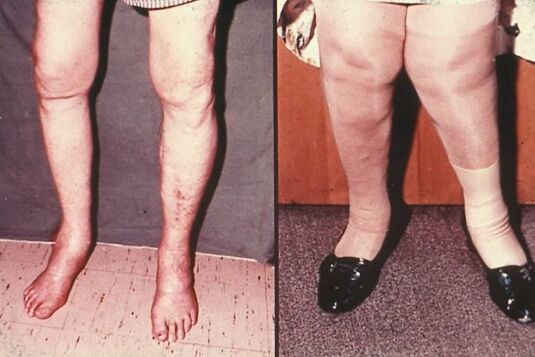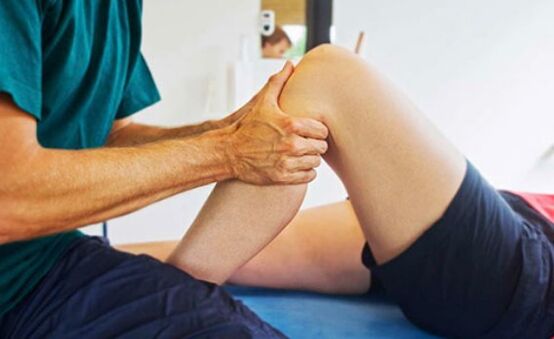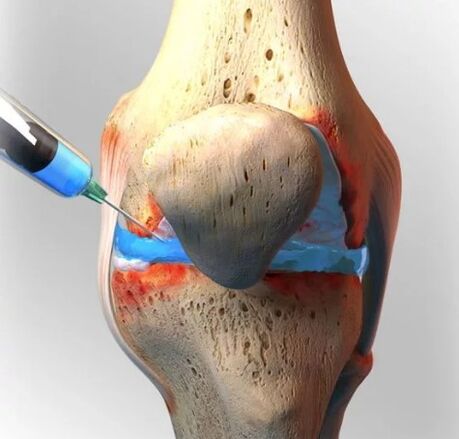All that you need to know about arthrosis - the causes, signs, varieties and its diagnostic methods - will help detect the disease in the early stages. And effective treatment methods will allow you to get rid of this disease. Arthrosis is characteristic of people over 40 years old. However, impartial statistics show that in recent decades a tendency to renovate men and women aged 30-35 have begun to suffer.

What is arthrosis?
Arthrosis is a chronic joint disease associated with pathological changes in the hyalin cartilage, and then in adjacent tissue, a joint capsule and a synovial shell. The loss is natural dystrophic and degenerative, which leads to a change in the structure of articular tissue, the loss of their functionality. In accordance with the data of the same statistics, arthritis is subject to 12% of the total population of the planet. From 62% to 65% of all episodes of the disease fall in people over 60 years of age. 30-35% of cases of joint damage to this pathology are in patients aged 40-60 years. And about 3% are young people aged 20-40 years.
The risk of joint disease is manifested by the fact that it practically does not heal completely. Although when you diagnose the pathology in the early stage of progress, it helps maintain the functionality of the joint.
Most often, cases of arthrosis lesion in such joints are diagnosed:
The disease is more characteristic of the female population - representatives of the female population suffer from this pathology more often at an older age. The arthrosis of the interaction union occurs in women 10 times more often than in the male population.

Possible consequences of arthrosis
With timely treatment, the disease is manifested by less developmental intensity and, as a result, a stop of degenerative and dystrophic changes. This means that surgical or therapeutic time interference allows you to maintain joint functionality, normal walking and eliminates pain.
At the same time, tightening with treatment leads to frequent and stable pain, dementia, swelling of the joint. Progressive pathological changes in tissues deprive the union of its usual functionality. In a short time, in the absence of competent treatment, arthritis quickly pours into a chronic form. Such consequences create the need for constant medical observation and regular treatment of the disease during periods of irritation.
To avoid the consequences and complications with the first suspicions of its development, you should contact medical specialists. In the early stages of progressing the treatment of arthrosis of the joints, a rheumatologist is engaged in treatment. In chronic form, the treatment of this pathology is performed by an orthopedic traumatologist.
Types of arthrosis
This node pathology has several forms and types that vary in such criteria:
At the site of manifestation of symptoms, hippie, knee, cystic, elbow, spatula, ankle, cervical arthritis are distinguished.
According to etiological signs, the pathologies of the primary nature are classified, developing in itself without any prerequisite and a secondary disease. In the latter case, damage to the joint occurs due to the development of infectious diseases in adjacent tissue, mechanical disorders, loss of physiological functionality of the joint, as well as a result of a progressive inflammatory process, hypothermia, damage or other factors.

Classification in the form of localization includes local and generalized joint damage. In the first case, the disease and its symptoms cover a small part of the union or its individual tissue and ingredients. With a generalized form, some joints are affected or one of them with full coverage of all common tissue.
At different stages of the progression of the disease, a different degree of intensity manifests. At the same time, symptoms and complications can express brighter, more or less dynamically leaking the process of destroying clothes and damaged joint functionality.
Depending on the flow of arthrosis, they distinguish:
Acute form is usually manifested by increased intensity of developing symptoms and their severity. Painful sensations appear more strongly, and morphological changes in the tissues continue more dynamically. In a chronic form, the course of the disease is slowly, it is manifested by separate signs during periods of irritation and practically not subject to cure.
Degree of illness
During the disease, medicine distinguishes three stages that have changes in the signs of the disease, the intensity of damage and localization. At the same time, the difference in all three phases is about the types of fabrics that undergo pathological changes.

In addition to these three degrees of pathology development, there is a final stage - irreversible destruction of all common tissue. At this stage, it is impossible not only to develop productive therapy but also to remove the pain syndrome.
The inflammatory process usually begins with a second degree of damage, in rare cases, in the absence of medical intervention - in the first stage. Then, it becomes more difficult to stop it, and this can lead to secondary pathology, the development of the pathogenic microflora at the site of localization of the disease.
To rule out the severe consequences, treatment must start from the first degree, and the use of intensive care methods. In the last stage associated with complete destruction of cartilage tissue, only one methodology is allowed to ride the patient from pain and immobility of the joints - endoprosthetics with complete or partial replacement of the joint components.
Causes of the disease
The reasons can be primary and secondary factors. In older people, the disease can occur with mixed etiology, that is, in the presence of primary and secondary causes. Their complex manifestation worsens the flow of arthrosis and reduces the dynamics of recovery.
The main cause of most types of this pathology is a violation of metabolism. Changed metabolic processes lead to morphological abnormalities in the cartilage and synovial fluid. As a result, changes are about the whole union, and are often associated with the origin of local inflammatory seals.
In addition to metabolic pathologies, the causes of arthrosis of the joints are:

A special place in arthrosis etiology is a genetic factor. Anomal anomaly the genetic abnormality that is able to provoke the dysplasia of the joint tissue and the disorder of the physiological functions of the collagen fibers, responsible for the flexibility and mobility of the joints.
At the same time, other accompanying factors are the reasons for the development of this pathology: deficiency of vitamin, intoxication due to products with excessive intake or overdose of medication, advanced age of the patient, pathological processes of blood and blood flow, hormonal abnormalities and diseases of the reproductive system of infectious origin.
The mechanism of progression of the disease
When any of the causes that provoke the disease of the joint with arthritis appear, pathological processes begin to develop in it. The mechanism of their progress has not been fully studied, but the main stages of official medicine are known.
In the initial phase, the structure of the cartilage tissue and abnormal changes in the synovial fluid occurs. All this goes on due to violations of metabolic processes in which joint tissue does not take the necessary ingredients in sufficient quantities, or are deprived of some of them.
Next, the elasticity of collagen fibers and cartilage flexibility is lost, due to the fact that in the body, with lack of nutrients, hyaluronic acid does not have time to produce, which provides the softness and flexibility of the structural composition of collagen fibers. The cartilage gradually dries, becomes fragile and cracks. The fluid in the synovial capsule is gradually impoverished and then completely disappears.
In the cartilage fabric, roughness, solid bone neoplasms are formed. At the same time, the deformation of other common tissue develops, their pathological degeneration, dystrophy and loss of physiological activity.
For the patient, these changes mean the appearance of pain, dementia and joint immobility.
Symptoms of arthrosis
Signs of arthrosis of the joints appear from its first degree, though sometimes they are not so pronounced. Characteristic phenomena for all stages of arthritis are:

Pain
Pain usually occurs during movement. With a strong physical exercise, painful sensations intensify and acquire a constant trend. With all types of arthrosis, any place of their localization, the pain is sharp.
In the initial stage, the pain is poorly expressed, most often they appear during the day. Usually the pain is short -term and decreases at rest. In chronic and intense progression of acute form of pain, pain syndrome manifests more often, has an increased period of manifestation, often disturbed even at night rest.

















































